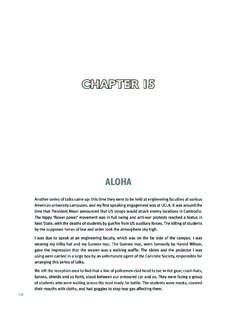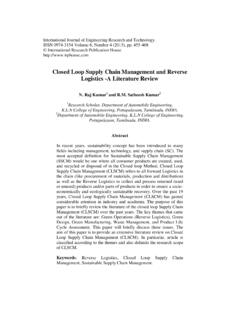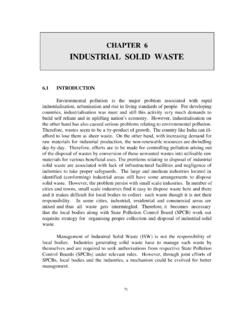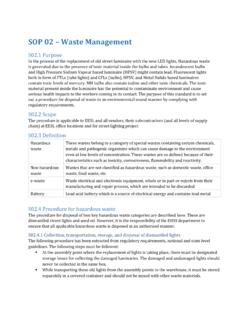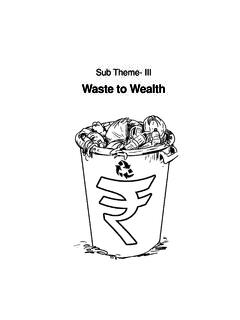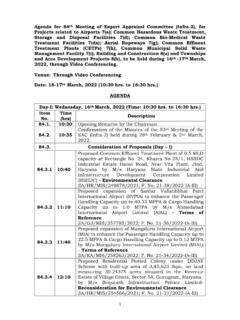Transcription of A Practical Introduction to Facilities Management
1 A Practical Introduction to Facilities ManagementA Practical Introduction to Facilities ManagementIan C. Barker MCIOBP ublished byWhittles Publishing,Dunbeath,Caithness KW6 6EG,Scotland, 2013 Ian C. BarkerISBN 978-184995-096-1 All rights part of this publication may be reproduced,stored in a retrieval system, or transmitted,in any form or by any means, electronic,mechanical, recording or otherwisewithout prior permission of the publisher and authors have used their best efforts in preparing this book, but assume no responsibility for any injury and/or damage to persons or property from the use or implementation of any methods, instructions, ideas or materials contained within this book. All operations should be undertaken in accordance with existing legislation and recognized trade practice. Whilst the information and advice in this book is believed to be true and accurate at the time of going to press, the authors and publisher accept no legal responsibility or liability for errors or omissions that may have been by Exeter Premedia, IndiaPrinted and bound invContentsList of theory and information slots xiiiAbbreviations used xvChapter 1 Getting started 1 What is Facilities Management ?
2 1 The value of experience 2 The trainee 4 Aims and objectives: setting out your stall 5 Identify 5 Evaluate 5 Plan 10 Action 12 Review 13 Getting started 14 Chapter 2 The basics 15 Tools of the trade 15 Computer systems and software 15 Phones 16 Administration structure 16 Networking 18 Being a newbie
3 19 Having a clear out 19 The quick fix 20 Understanding your portfolio 21 Physical assets 22 Understanding your service and how it f its onto your site 24 ContentsviChapter 3 Managing people: staff and customers 27 Managing your staff 27 Choose your staff well: recruitment 28 Communication with your staff 30 Find out what makes them tick 33 Dangle the carrot 34 Review 37 What about you? 37 Are you up to the job? The S curve and learning cycles 37 Your training 39Do you have the necessary support structure? 39 Are you adequately resourced? 39 Teamwork: what makes a good team? 40 Staff training 42 Ability of staff to undertake their duties effectively 42 People must want to progress 43 Creation of stability and succession 44 Ability to meet legislative requirements 45 Ability to overlap services 45 How do you get staff to undertake training?
4 45 Rewarding progress 46 Fair and equal pay and training 49 Customer service 50 Creating a good impression 50 Providing good customer service 51 Practising what you preach 55 Development of customer services 55 Chapter 4 Policies, strategies, procedures, risks and liabilities 59 Policies 59 Strategies 61 What is a strategy? 61 What are the key points of a strategy? 62 Procedures 64 Guidance notes 65 Forms 66 Administrative f low 66 Monitoring and managing 67 What are you managing and monitoring? 68 Where are you are managing and monitoring? 68 When will you manage and monitor?
5 69 How will you manage and monitor? 70 Why are you managing and monitoring? 71 ContentsviiQuality Management 71 What is quality ? 72 What is quality Management ? 73 Bench-marking 75 Why is quality so important? 76 Risks and liability 77 What is compliance? 77 Statutory requirements 78 Risks with new builds and defect periods 84 User requirements 87 Heating systems 87 Fire legislation 88 Emergency procedures 91 Risks to property 91 Building maintenance 92 Staff 97 Financial risks 99 Making mistakes 101 Chapter 5 Outsourcing of services or in-house staff? 102 Reasons to outsource services 102 Does the service work? 102 Does the service f it the requirements of the site? 103Is the service f inancially sound? 103Is there a sound reason for change? 104 Service drift 104 Outsourcing: advantages and disadvantages 106 Advantages of outsourcing 108 Disadvantages of outsourcing 108 Specif ications 109 Types of specif ication 110 Risk 112 The education sector.
6 The learner experience and outsourcing 113 Working with contractors 114 Choosing your contractors 115 Performance and review 116 Quality 116 waste 118 Health and safety 119 Contractor f iles 120 Procurement routes for FM 120 ContentsviiiChapter 6 In-house teams 124 Maintenance team 124 Specialisms 125 Workload 125 Performance 127 Contracting in or out? 128 Site supervision team 129 Timing of service 131 Integration 131 Safety and security 132 Resourcing 132 Core times and resourcing 133 The friendly service 134 Helpdesk team 134 The hub for your department 135 The place to report defects or problems 135 Customer service department 136 Audit department 136 Helpdesk software specif ication 137 System requirements 138 Post team 140 Deliveries out to departments 140 Parcels and deliveries 141 Cleaning team 142 Timing 142 Supervision 144 The poisoned chalice 144 Value added.
7 Sustainability and security 145 Consumables 146 Security team 146 Safeguarding 147 Intruders 147 Drugs and alcohol 148 Closed-circuit television 149 Patrols 149 Statistics 150 Chapter 7 Maintenance including new builds and space Management 152 Types of maintenance 152 Reactive maintenance 152 Planned maintenance 154 Planned preventative maintenance 155 ContentsixPlanned programme and planned survey 158 What is a planned survey document? 158 Planned programme 161 Space Management 161 New builds and maintenance 163 Pre-build 163 Heating 164 Ventilation and chilling/cooling 166 Electricity use and new technologies 167 Disputes 167 Chapter 8 Sustainability, use of resources and sustainable technologies 169 What is sustainability?
8 169 Improving the sustainability of your organisation 171 Identif ication of resources used 171 Conversion of resource use into a carbon footprint 172 Setting bench-marks and targets 172 Setting future targets 173 Reporting progress and reviewing results 173 Sustainability: a whole organisation approach 174 Determining your carbon footprint 176 Carbon emissions from transport 177 Carbon emissions from waste disposal 177 Water usage 178 Carbon emissions and procurement 179 Your Carbon Team 180 Organisational buy-in 181 Your carbon plan 181 Sustainable technologies 182 Ground source heat pumps 183 Air source heat pumps 184 Biomass boilers 184 Solar thermal panels 185 Photovoltaic panels 187 Wind generation 189 Voltage optimisation 189 Grey water 190 Building Management Systems 190 Installing sustainable technologies 191 Utilities 191 Establishing your base load 192 ContentsxProcurement of electricity 192 Control of utilities 194 Educating the occupants of buildings 195 Chapter 9 waste and how to deal with it 198 What is waste ?
9 198 Paper waste 198 Sources of paper 199 Cost of paper copies 200 waste paper 201 Food waste 202 Specialist waste 203 Batteries and toner cartridges 203 Oil waste 204 Fluorescent tubes 204 Radioactive sources 205 Building waste 206 Chapter 10 Fleet Management 207 Drivers and licences 207 Drivers hours 209 Vehicles 210 Key control 210 Logging journeys 210 Trackers 211 Fuel cards 211 Capital purchases 211 Appendix 1 Strategic objectives and operational targets for a typical college 213 Appendix 2 Management strategy for heating and ventilation in a college environment 245 Appendix 3 Health and safety rules for contractors 255 Appendix 4 Sustainability policy 266 Appendix 5 Dealing with bomb threats 269 Appendix 6 Preliminaries and conditions 273 Appendix 7 Strategy for helpdesk 283 Appendix 8 Strategy for operations and maintenance 287 ContentsxiAppendix 9 Service level agreements 289 Appendix 10 Cleaning specif ication 291 Appendix 11 Grounds maintenance specif ication for a college 307 Appendix 12 Health, safety and environment questionnaire 316 References 322 Index 325 xiiiList of theory and information slotsChapter 1 The future of Facilities ManagementHard and soft servicesGantt charts and the Critical Path MethodFayol: the six functions of managementPDSAC hapter 3 Maslow s Hierarchy of NeedsMary Parker FolletHerzberg s Motivational TheoryGeorge Elton MayoMcGregor.
10 Theory X and Theory YEffective managementSWOT analysisChapter 4 Using a dashboard Policies and proceduresRisk assessmentThe Golden Thread TaylorismGilbrath s time and motion studyAdvantages of ISO 9001 List of theory and information sLotsxivChapter 5 Single service procurementBundled servicesIntegrated FMTotal FMTotal infrastructure FMChapter 7 Prequalification QuestionnairesChapter 8 SMARTER technologyxvAbbreviations usedACMs Asbestos-containing materialsAMR Automated meter readingAOC Association of CollegesBIFM British Institute of Facilities ManagersBMS Building Management SystemCAD Computer-aided designCCL Climate Change LevyCCTV Closed-circuit televisionCIOB Chartered Institute of BuildingCOSHH Control of Substances hazardous to HealthCPD Continuous professional developmentCPM Critical Path MethodCRB Criminal Records BureauCTR Collective team responsibilityELI Employers liability insuranceEMS Environmental Management SystemFM Facilities ManagementM & E Mechanical and ElectricalMPAN Meter point reference numberO & M Operations and MaintenancePCV Passenger carrying vehiclePDA Personal digital assistant (palmtop computer)PFI Private Finance InitiativePLI Public liability insurancePPM Planned preventative maintenancePQQ Pre-qualification questionnaireQA Quality Assuranceabbreviations usedxviQDP A national questionnaire on the quality of student perceptionQMS Quality Management SystemSAR Service Area ReportsSLA Service Level AgreementsTRV Thermostatic radiator valveTUPE Transfer of Undertakings and Protection of EmploymentVRF Variable refrigerant flowWEE waste Electrical EquipmentTo aid you through this book, various key pieces of information will be highlighted in the following to selfThese are action points to draw your action to key pieces of text or remind you to do something.

